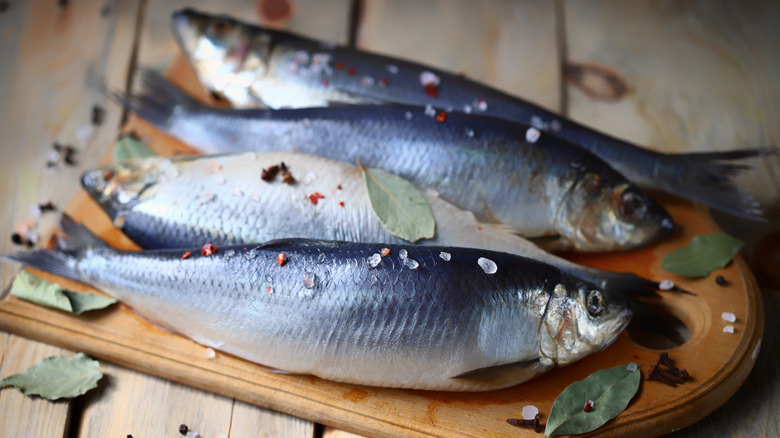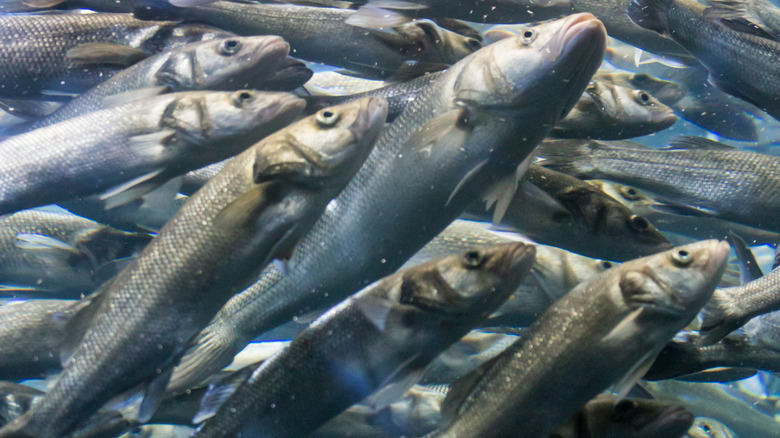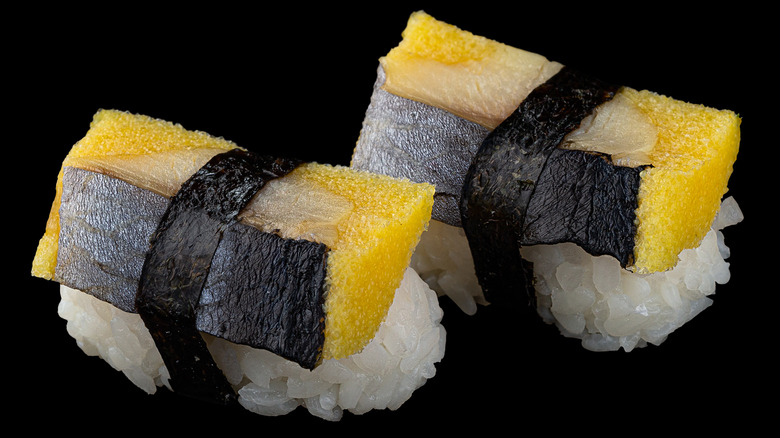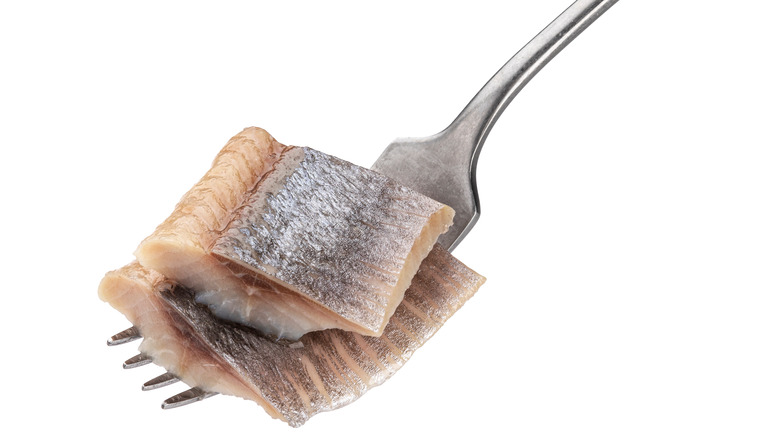What Is Herring And What Does It Taste Like?
If you fancy yourself a world history buff, then you no doubt are familiar with the herring's role in the downfall of one important medieval alliance, the Hanseatic League. According to World History, this powerful league was a federation formed to facilitate trade and protect the interests of German towns and cities in the 12th century. The league helped raise the economic status of its merchant class and even waged war with Denmark, resulting in free trade throughout Scandinavia.
Here's where the herring comes into play — at one time, the Hanseatic League had a monopoly on herring, but climate change in the 15th century put an end to that. When the weather got colder, the herrings' new spawning patterns brought the coveted fish closer to Holland and away from the league's dominion. This shift in the herring trade, along with some other factors, led to the league's decline, and it officially disbanded in 1862 (via World History).
With so many fish in the sea, we have to ask: what is so special about herring that its absence could spell disaster for such a powerful organization?
What is herring?
It turns out there are a lot of different types of herring (Clupea harengus). According to The Fish Society, out of the 200 different species of herring, only three of these species are the kind of fish that are likely to end up on your plate: Atlantic, Pacific, and Araucanian. Herring are silver in color, with a slightly bluish hue on top of their bodies, and paler tones underneath. The silvery fish can weigh up to one-and-a-half pounds, according to the outlet. (For comparison, the average market rate of an Albacore tuna is between 10 and 30 pounds, according to Seafood Source). According to The Spruce Eats, the fish can live up to 15 years in the wild and can be found in both fresh and saltwater.
Herring's importance, according to Seafood from Norway, lies in the fact that there are so many. The "silver of the sea," as they are nicknamed, are school fish, and according to the outlet, one school can have three billion fish and occupy a full cubic mile. Just imagine how long that roll call would take!
What does herring taste like?
Though herring are smaller than some of the larger commercial fish we eat, fresh herring meat is soft, according to Seafood Source. Small herring have a delicate flavor, while larger fish have a fuller, oilier flavor. The overall taste of the fish, however, lies in how it is cooked. If the herring is pickled, most of its fishiness is covered up. If it's pickled in wine, it can taste slightly sweet and oniony, while if it's pickled in cream sauce, it has a sweet and sour taste profile going on. When smoked, it retains more of its original fish flavor, while sour or fermented herring has the strongest flavor profile and an accompanying pungent smell to boot (via The Takeout).
If you're a sushi lover, you can find herring under the title "Nishin." It's often served as nigiri, according to The Sushi Geek, and has good fat content. According to Just One Cookbook, herring roe is also served as a delicacy called Kazunoko that is a popular dish during Japanese New Year. The bright, yellow roe holds tiny eggs that break apart while you eat them. It has a caviar texture, is salty, and may taste like its marinade of dashi and soy sauce. It's an expensive dish, so be sure to bring your wallet if you want to try this one out!
Nutritional Information about Herring
It's a good thing there are so many herrings because they offer some impressive health benefits. According to The Fish Society, herring is a great source of vitamin D. There are a number of reasons vitamin D is important. According to Medical News Today, this vitamin promotes healthy bones and teeth, supports the immune, brain, and nervous system, regulates insulin levels, supports lung function and cardiovascular health, and even influences genes involved in cancer development.
Beyond providing vitamin D, herring also provides even more health benefits. According to The Spruce Eats, herring has fatty acids (which can help with energy storage according to Kids Health). Other vitamins we can benefit from when eating herring are B6, which helps us maintain a healthy immune system and metabolism, and B12, which helps our bodies make red blood cells (via Physicians Weekly). Herring is also a good source of protein, which our bodies need to both maintain and repair tissue (via Healthline). Herring gets a solid hoorah from us for being so healthy!
How to buy, serve, and enjoy herring
Unless you're headed out to catch your own herring, the chances are the herring you will be eating here in the United States is canned, pickled, or smoked according to Seafood Source. (If you do get a hold of fresh herring, it can be cooked almost any way except for poaching or steaming, according to the outlet). Smoked herring can be served with a variety of starches like rice, bread, or dumplings (via The Spruce Eats). You can likely find pickled herring, according to Eating Well, in the seafood department of your local supermarket. The simplest way to serve it is on crispbread (via Swedish Spoon), but if you're looking for an interesting way to serve the pickled fish, Eating Well has an enticing recipe for Scandinavian Herring Bites complete with cooked potato slices, red onions, dill, and sour cream.
Pickled herring is also available at Jewish delis like Shelskys. Here you can find them sold in a variety of ways, including matjes, which are fatty young herring soused and pickled in a variety of ingredients like allspice, clove, and sugar or schmaltz herring, which are salted herring preserved in oil. If you're lucky enough to travel to the Netherlands during the new Dutch herring season, according to Robb Report, then you'll have the opportunity to try the fish in its most celebratory fashion — raw, headless, and by holding it by the tip, tipping your head back, and lowering in the whole glorious herring into your open mouth.




